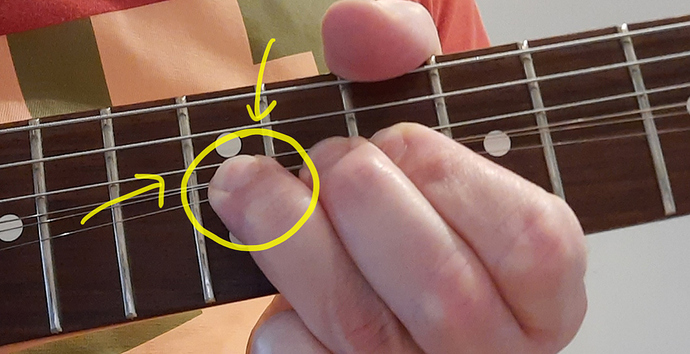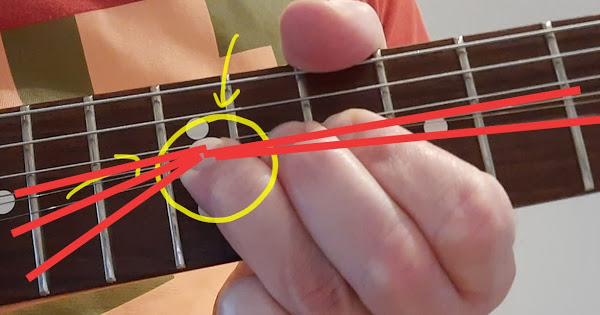Stauffer (Texas Blues Alley - great site) has a video on how he sets the action on his guitars specifically with bending in mind; he starts with getting that high E at a bendable height.
I think I have an intuitive way to think about this. If you only analyze the part of the string between the fret and the bridge, the increase in tension required to bend a string to pitch is independent of the fret. But you are of course simultaneously increasing the tension of the portion of the string between the fret and the nut, which requires effort proportional to the change in pitch of that side of the string. The closer you get to the nut, the higher the pitch change of the nut-side of the string, and thus the greater amount of force required. Around the 12th fret, the pitch change of both sides will be roughly equal (the precise location depends on how you grip the string: how many fingers, how spread out, etc. For a two-finger bend with one fret per finger, this would happen at fret 13). At lower frets you are bending the nut-side more than the bridge-side, and at higher frets you are bending the bridge-side more than the nut-side.
Intuitively, it seems like the middle of the string should be the easiest place to bend, maybe because of the symmetry between the nut-side and the bridge-side of the string. But the physics isn’t actually symmetric because we only care about the pitch of the bridge-side. The comparative change of the pitch on the nut-side decreases as you go up the neck, which means the effort required also decreases.
This is explained in my previous answer, but the intuition of it probably gets lost in the trigonometry.
My initial thought was that the bending distance didn’t matter as long as the force was roughly the same because I was considering each string in isolation. But I think you’re right, the bending distance does matter because we usually end up bending more than one string at a time. I now think that this is the true answer to the question. The high E-string is harder to bend to pitch because it has to be pushed further than the other strings, which means we end up inadvertently bending the next string as well, which increases the load.
For example: for a 1 step-bend on the E-string at the 12th fret, we will also have to provide enough additional force to also bend the B-string by (let’s say) a half-step. But if we try to bend the B-string at the 12th fret, we only have to provide enough additional force to bend the G-string by maybe 1/4 or 1/8 of a step. For larger bends, you end up bending 3 or more strings, which increases the load discrepancy even more.
I’m not totally certain without some experimental proof, but I feel pretty confident that this is actually the dominant reason that bending on the high E string feels harder than the other strings.
How do you bend? Do you use the adjacent fingers as support? This will immensely help with bending. Are you bending from the wrist or fingers? Do you use the middle and index to help the ring finger when bending by being down on the string behind the fretting note finger?
Good point! I’ve noticed I adjust my positions to have support fingers for bends.
We do somany subtle things that only come up for discussion here! Truly a unique place.
Just for reference I took two “selfies” of myself bending the high E by a whole step (hammered on from nowhere then bent to pitch while holding the phone - the string displacement should be correct)
Wider shot:
Edit: i can definitely notice the effect that @induction mentioned - you can see that to reach the whole step I am also bending the B string by a significant amount (if I play it it almost reaches the whole step itself), and the g string by a non negligible amount.
Couple more details:
-
I checked, and at the 12th fret when I bend the high E by 1 tone, also the B is bent by one tone. Playing the two together sounds like an almost perfect 4th.
-
You can see quite clearly a whitening of the nail of the ring finger. If I go further (like a 1.5 tone bend), I get the definite and uncomfortable feeling that the tip of the nail wants to detach from the finger:
Edit: the “nail wanting to detach” thing could be overcome by grabbing the string with a “flatter” finger, so that the fingertip gets pushed against the nail instead of away from it. I haven’t found a way to do that though. Maybe this is where the scalloped frets help?
Something odd there maybe. I don’t think your support fingers should be higher than the freted note finger, either that or they’re not giving u enought support. The string should have only one vertex if that makes any sense.
Edit: the other support fingers follow but in an angle, I’m overthinking this 
Edit2: yup, the b string at the circled note should meet at the fretted note on the same feet, not the middle finger note.
I some times place other fingers higher to mute unwanted noise in the lower strings. It seems to be common practice.
Was thinking the displaced strings should bend at the fretted note, sorry mobile photo editor.
@jllopez I wish I had my guitar to check this out. I mostly end up right hand muting. Left hand muting under a bend would be beyond me for higher strings I’m thinking.
Ah yes, I think I know what you mean - it makes sense from a mechanical optimization perspective! Only problem is, I have no idea how to change this 


Strike that, @jlopez is right. They won’t meet at the first fret, gotta account for action, he’s right about the muting. I just grabbed an old acoustic and looked at it, looks the same as your pics. Think it’s just leveling up overtime. Callous building to be had 
Edit: 40 second mark, no thumb 
I like the sound of that 
But I think the crucial thing for me is to grab the string in a way that the fingertip is pushed towards the nail, not away from it. I have enough calluses to not feel the “cutting” of the string, but the problem is that the string tension is trying to separate my fingertip from its nail. Very annoying feeling!
Drop a gauge Tommo, no point fighting it, you are already a very advanced player, just raise the action a bit for even better tone.
Edit: scallops do make easy work of it, but I suspect string gauge will help more, order a set of custom YJM gauge from stringjoy.com, 8-11-14-22-32-46, the 22 is wound when ordering to be sure. The gauge spread is different from most sets. Gotta give it to Malmsteen for figuring this one out.
But from a biomechanical perspective, the role of the supporting fingers is to distribute the workload of bending the string. If the bent string has only one “bend point” at the fretted note, then the supporting fingers aren’t bearing their share of the pressure.
The theoretically optimal spread of the pressure (in the case of one “fretting” finger plus two supporting fingers) might not involve each finger bearing exactly the same amount of pressure (since they aren’t all equally strong), but it would have each finger bearing at least some of the pressure. That means we would have three bend points that we could think of as the vertices of a triangle.
In order for the middle finger to be bearing any of the pressure, the middle finger vertex has to be offset a non-zero distance (on the “bendward” side) from the edge that joins the index vertex and the ring vertex. If the three vertices form a straight line (or the middle finger is offset in the other direction), then the string is only stretched across the index and ring, and the middle isn’t bearing any of the pressure.
In practice, this may nearly appear to be a straight line, but to the extent that it’s not actually a straight line, we should expect the vertices to outline a triangle that satisfies the condition above.
In practice, this may nearly appear to be a straight line, but to the extent that it’s not actually a straight line, we should expect the vertices to outline a triangle that satisfies the condition above.
Yes, I stand corrected. I made some wrong assumptions.
Bending a string is stretching the metal. I presume that depending on how the string is tuned the “Young’s modulus” will be different, making it harder or easier to bend than one would expect given its thickness. I think that somebody like @tommo could do calculations like this in his sleep. But what is interesting is that the strings break: This might mean a different type of steel might be appropriate, and some of the most interesting strings are from Ernie Ball, where they have maraging steel (“M-Steel”), and whatever it is that they put in their “Paradigm” strings, that are supposedly even harder to break. (There are special machines that break strings, from Instron, but I don’t have one.)
Every brand of strings have their own peculiarlies. American steel is different from European steel (and the choice of metals used are different between the two continents). Two examples are Austria’s Thomastik-Infeld brand (which have brass plated plain strings) versus Bavaria’s Pyramid brand plain strings (where both companies are vastly different feeling/sounding than various American brands‘ plain strings). Also having taller frets and a flatter fingerboard radius plus the scale-length of any instrument you play ALL MATTER GREATLY in what you end up being able to bend. Try different gauges from different string companies until you find what you are looking for. Lastly, scalloped fingerboards make bending easier too.
And I thought I was the only one dealing with this particular inconvenience haha. I’m practising the tornado of souls guitar solo, I can pretty much nail all the flashy stuff marty does using upwards escape, but I’m really struggling getting his bends right, especially a bend he does in the high E string right after the super fast yngwei-like two string arpeggios.
but I’m really struggling getting his bends right
Well, Marty is kind of the King of Bends isn’t he 
By the way I noticed the other day that, when I can, I tend to use all 4 fingers to bend the high E
@tommo I used to experience an actual split beneath my nails when doing hard bends, I think it might’ve been due to biting my nails before (which maybe made the skin weaker)? Also changed the pushing angle I think to make the skin less likely to split.





